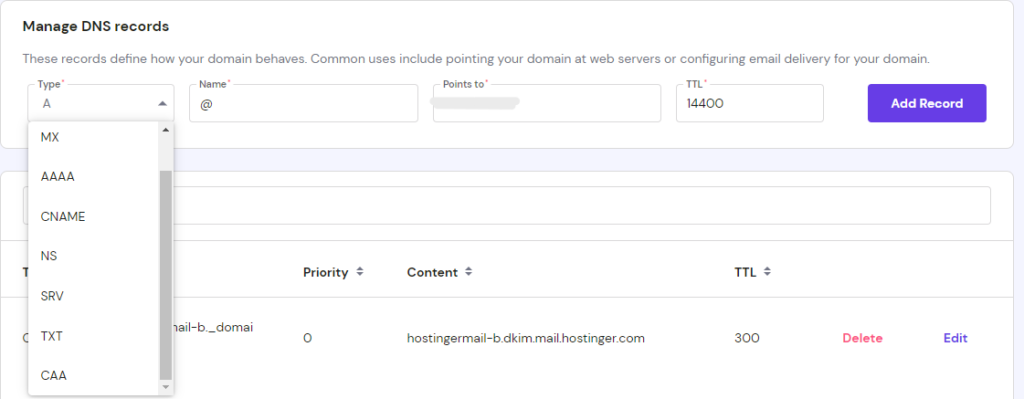before knowing about DNS record types, you need to know that DNS (Domain Name System) is like a phone book for the internet. It is a system that translates human-friendly domain names (like www.vivaansmit.com) into the unique numerical IP addresses that computers use to locate and communicate with each other on the internet.
In DNS (Domain Name System) Zone Editor, various types of records are used to define and manage the DNS settings for a domain.

Here are the meanings of some commonly used DNS record types:
A Record (Address Record): An A record maps a domain name to an IPv4 address. It associates the domain name with a specific server or IP address.
MX Record (Mail Exchanger Record): MX records are used to specify the mail server(s) responsible for handling email delivery for a domain. They define the domain’s mail exchange servers’ priority and their associated hostnames.
AAAA Record (IPv6 Address Record): Similar to the A record, an AAAA record maps a domain name to an IPv6 address. It associates the domain name with a specific IPv6 address, allowing the domain to be accessed over IPv6.
CNAME Record (Canonical Name Record): A CNAME record creates an alias or canonical name for a domain. It is used to associate a domain name with another domain name (the canonical name), allowing multiple domain names to point to the same location.
TXT Record (Text Record): A TXT record is used to store arbitrary text data associated with a domain. It is often used for various purposes, such as verifying domain ownership for email services or providing additional information about a domain.
NS Record (Name Server Record): NS records specify the authoritative DNS servers for a domain. They define which DNS servers are responsible for providing the DNS information for a particular domain.
SRV Record (Service Record): SRV records are used to define specific services available within a domain. They specify the hostname and port number of servers providing specific services, such as SIP (Session Initiation Protocol) for VoIP or LDAP (Lightweight Directory Access Protocol).
These are just a few examples of DNS record types commonly used in the DNS Zone Editor. Each record type serves a specific purpose in managing the DNS settings for a domain.
